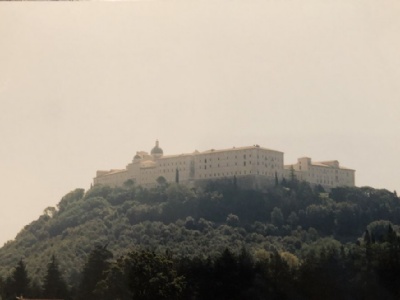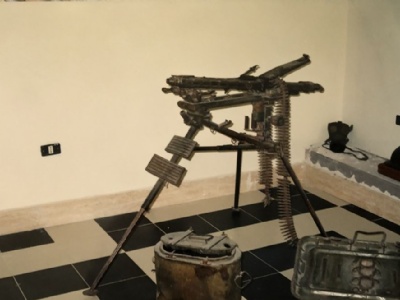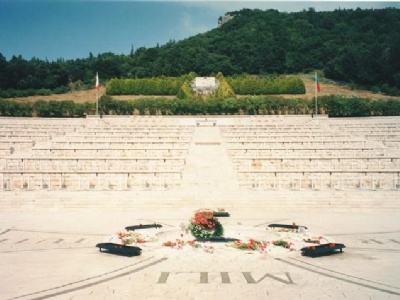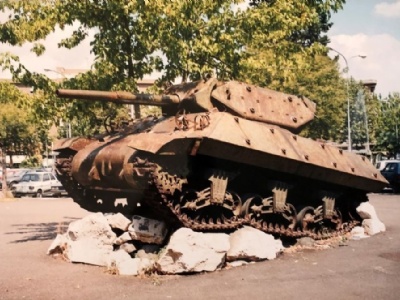Monte Cassino
On September 9, 1943, American and British forces landed on the Italian mainland at Salerno south of Naples. The day before, Italy had withdrawn from the war and Mussolini been overthrown. The beaches around Salerno were therefore defended exclusively by German forces. After about a week, a bridge had been established and American and British forces could begin the advance north with the capital Rome as the main target.
However, the Italian theatre of war was problematic with hilly mountain terrain and persistent autumn rains that put a strain on the troops, both physically and mentally. This allowed the German defenders to establish with relative ease new and difficult-to-force defensive positions along the so-called Gustav line. But slowly the Allies advanced northward, and at the turn of the year 43/44 they stood at the city of Cassino, about 130 kilometres south of Rome.
Cassino is best known for its monastery located just outside the city at an altitude of just over 500 meters. The monastery had been built already in the 500s by the Benedict Order and has over the years been destroyed, abandoned and rebuilt by various actors. In 1866, it became a national monument with special cultural (and religious) value.
The hilly terrain around Cassino and the monastery provided favourable conditions for the Germans to construct a new line of defense. The allies launched a first attack on 17 January 1944, but this attack was repulsed by the germans. The Allies suspected that the monastery was used as an observation post and therefore decided to bomb the monastery. This was a controversial decision because it was not possible to confirm that the Germans did use the monastery and not just the slopes below. Its historical value was also something to take into account before a decision was taken to bomb the monastery.
On February 15, 1944, the monastery was completely destroyed by repeated airstrikes and major historical cultural treasures were lost. Fortunately, monks with the permission of the Germans had evacuated valuable cultural treasures in December 1943. When it turned out that the monastery had not been used by the Germans for military purposes, the bombings were even more questioned. But the ruins of the bombings created good opportunities for German paratroopers to establish impregnable defenses.
A new offensive against the city was launched in March, and this time the fighting was mainly fought in and around the city itself. Bitter battles were fought and slowly the Allied won ground, forcing the Germans to retreat. The final breakthrough came in May 1944 when the allies managed to surround the remaining German defenders. On May 18, Polish forces placed the flag at the monastery, symbolizing the end of the battle for Monte Cassino. For about four months, the Allies lost about 55,000 men while the Germans’ losses amounted about 20,000 men. After the war, the monastery was rebuilt.
Current status: Rebuilt with museum (1998).
Location: 41° 29' 24" N, 13° 48' 50" E
Get there: Car.
Follow up in books: Parker, Matthew: Monte Cassino: The Hardest-Fought Battle of World War II (2004).






When I visited the monastery in 1998 I took the train from Rome to Cassino. In 1998 there was a small museum with various objects probably found among the monastery ruins. Since my visit, a finer and more dignified museum has been built at the monastery about the battle. About 700 meters from the monastery there is a Polish war cemetery. In and around Cassino there are more war cemeteries, both german and allied, monuments and military destroyed vechiles. For those interested, there is a lot to discover and it is best if you have access to a car as several places are outside Cassino.